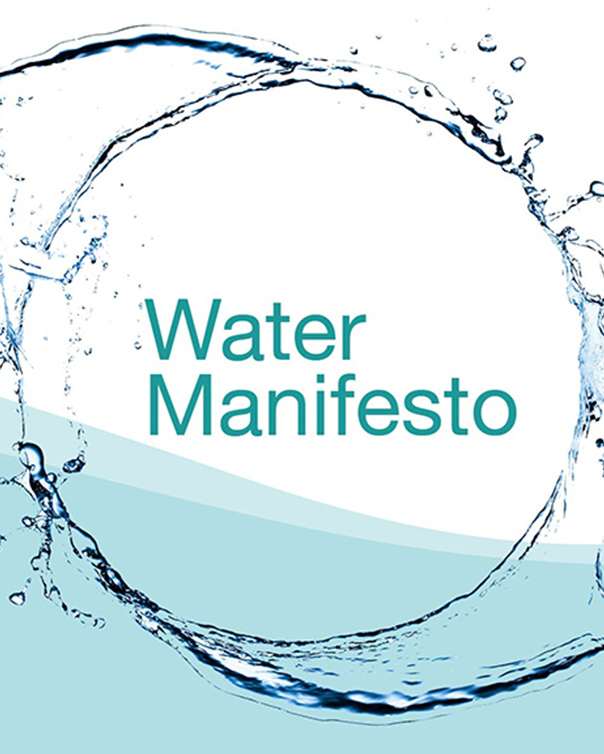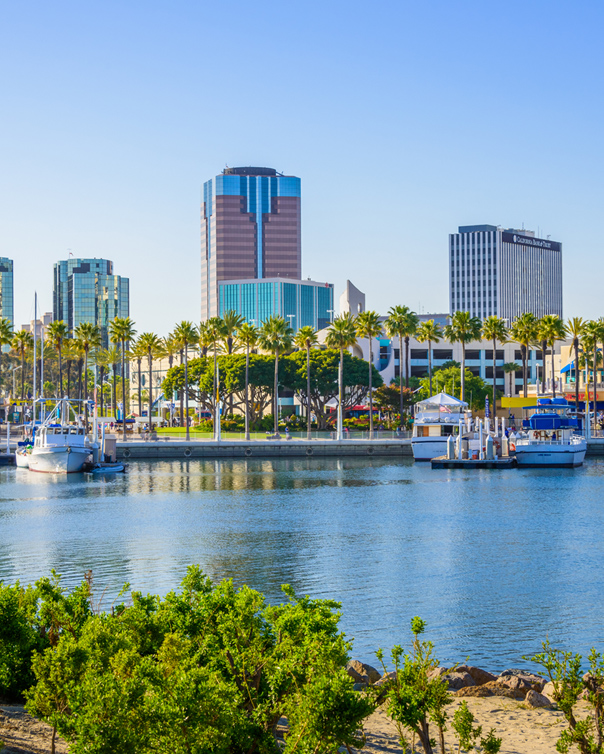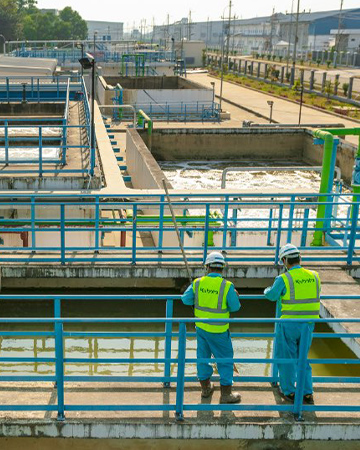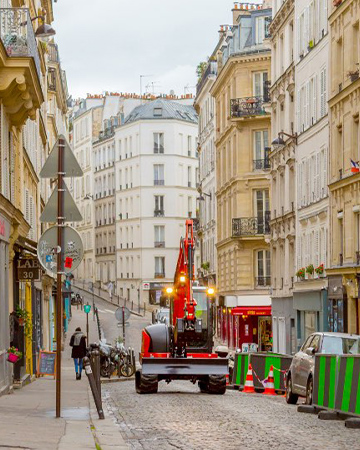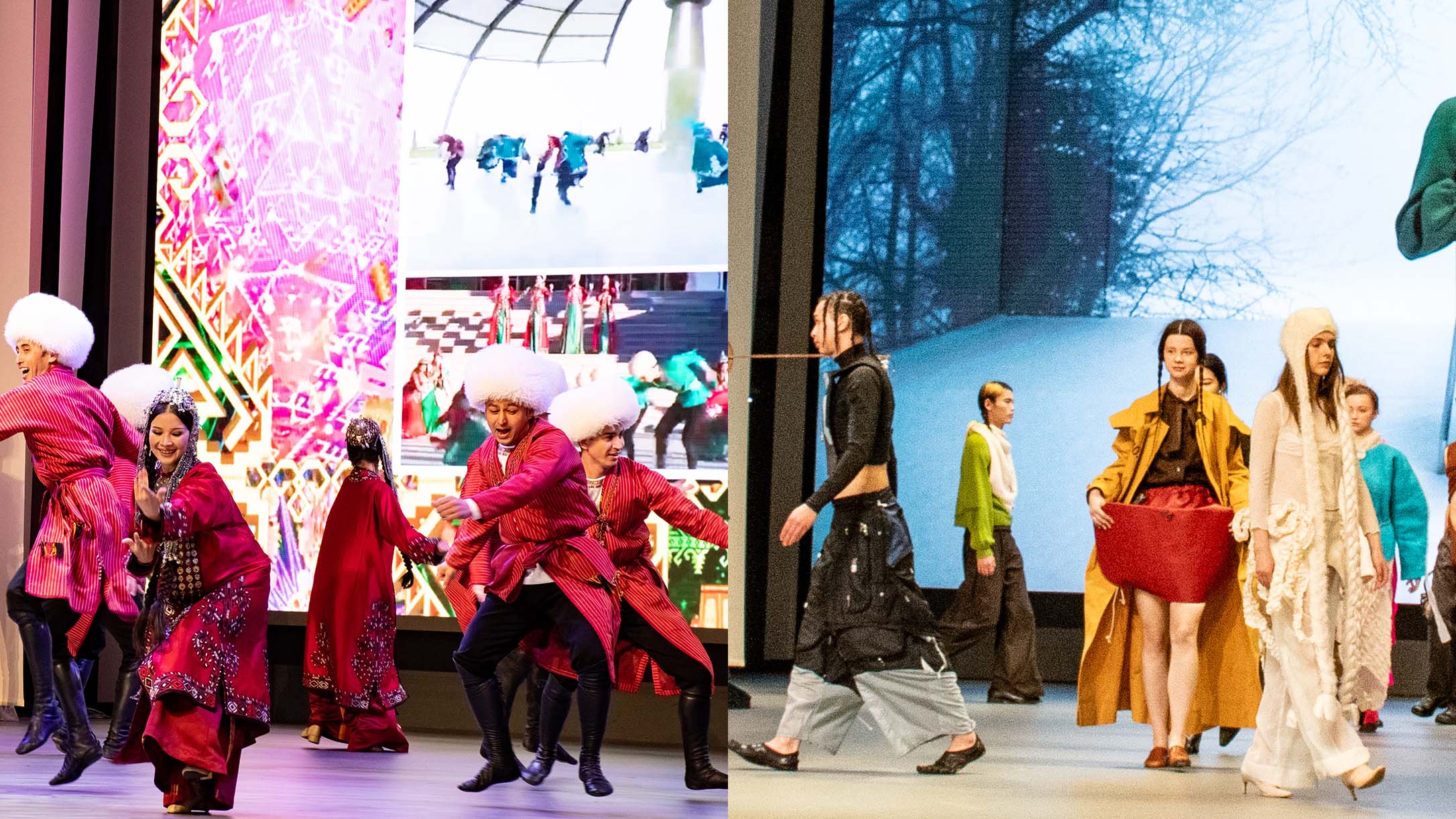
Expo 2025 Osaka, Kansai (Expo 2025) opened in April 2025. Countries from around the world are exhibiting not only to showcase their cultures and technologies, but also to express both how they are facing challenges that confront modern society and the future they envision. "Where the World and Kubota Intersect" series covers exhibiting countries who have ties to the company, and presents how Kubota technologies and initiatives intersect with those countries.
This first installment in the series, relating to the theme of food, water, and the environment, looks at two exhibiting countries who have ties to Kubota: Turkmenistan and Switzerland. The natural conditions, as well as the histories and challenges of these two countries differ. How do Kubota technologies intersect, and how are we working together to chart a course to the future? We will explore some of these aspects through the international stage of this Expo.
Turkmenistan: Arid Land, Water-wise Strategies

“Su – türkmeniň jan, at – ganat, haly – ruh.”
(Water is a Turkmen's life, a horse is his wings, a carpet his soul): Turkmen proverb
In terms of natural gas reserves, Turkmenistan, which is located in Central Asia, is one of the world's leading countries, yet approximately 80% of the country's territory is an arid region covered by the Karakum Desert. How can the country make effective use of its limited water resources? This is an unavoidable challenge for Turkmenistan in promoting both sustainable agriculture and urban infrastructure management.
The Turkmenistan Expo pavilion features a magnificent curved display showcasing lush green scenery, orchard bounty, traditional costumes, the carpets and horses that are considered a source of national pride, as well as the national dog, the Alabai, all of which are woven into a poetic image of people living in harmony with rich nature.
The dazzling whiteness of its capital city, Ashgabat, and images of its newly constructed smart city, Arkadag, represent the Turkmenistan vision of a better tomorrow. The country has continued taking on challenging water resource projects, such as its nationwide greening initiative and developing the Karakum Canal further.

Under such circumstances, Kubota is currently conducting a project in Turkmenistan to demonstrate the effects of installing highly wear-resistant water resource pumps. The demonstration project is taking place on the Karakum Canal near the capital, Ashgabat. By upgrading the existing pumping station and introducing pumps with superior durability and energy-saving performance, the project is supporting the effective usage of water resources.
Both in Japan and overseas, Kubota has thus far been involved in water infrastructure development, which includes water supply and sewage systems as well as water for agricultural use, and it has worked behind the scenes to support the water environment. Particularly arid regions, such as Central Asia, test the true value of technology in terms of how efficiently it delivers the limited available water without any waste.
“Delivering water to arid land.”
This hope for the future of Turkmenistan is a mission that corresponds with the Kubota “For Earth, For Life” philosophy.
Switzerland: Living in a Country of Slopes, the Potential of Small Machinery
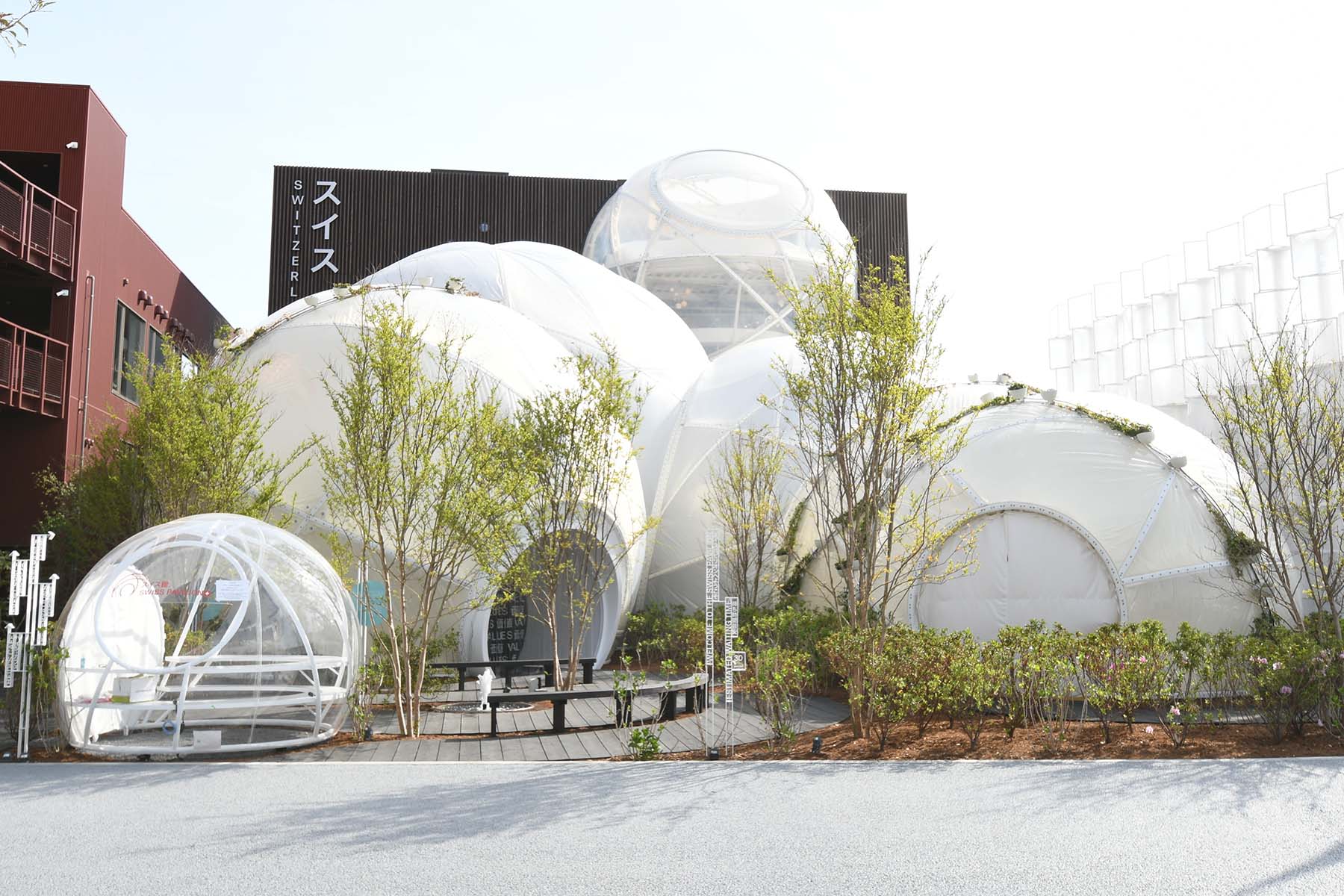
“Ehrlich währt am längsten.”
(Honesty is the best policy): Swiss proverb
Switzerland is the Land of Heidi. With the Alps embracing its landscape, it is a permanently neutral country. Since many Swiss farmlands and villages are located on slopes and in valleys, the lack of flatland has led to unique innovations in agriculture and infrastructure development. Thus, a culture emphasizing coexistence with nature and recycling has taken root in Switzerland, which is now one of the most environmentally advanced countries in the world.
The Swiss Expo pavilion consists of three components: Augmented Human, Life, and Planet. Visitors are able to embark on a journey collaborative Swiss innovation with Heidi. Set up separately from the exhibition zone, the Heidi Café offers visitors the opportunity to enjoy traditional Swiss cuisine while gazing at the Grand Ring.
The building was designed to be the lightest ever Expo pavilion constructed by Switzerland. As clear as the Alpine air, the transparent spheres incorporated into the building give the entire structure a soap-bubble lightness. Aiming to fuse nature and technology, as well as to minimize the environmental impact of transportation and construction, the architecture is based on an honest philosophy born from the Swiss climate.
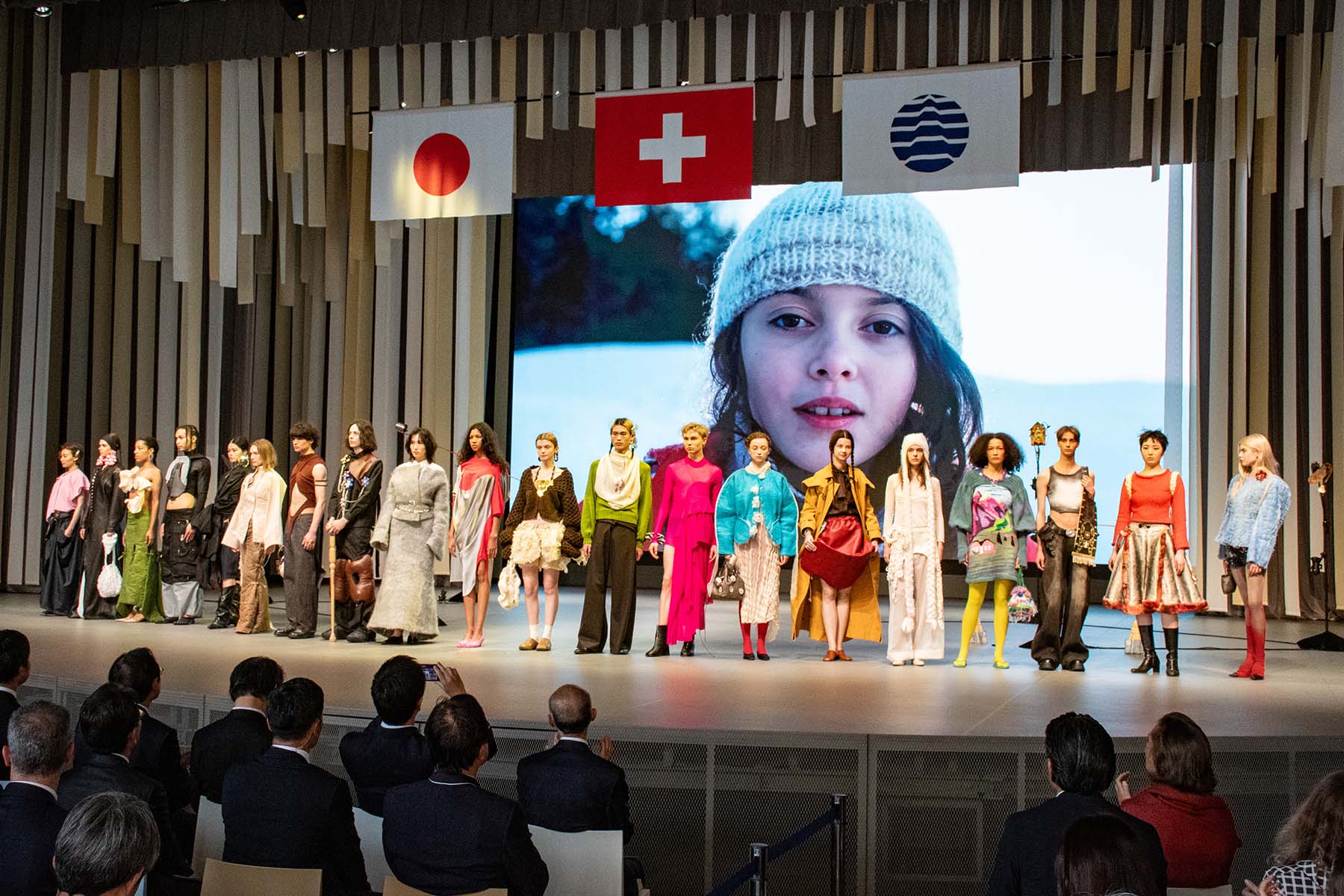
In this environment, small Kubota tractors and backhoes are well-loved and extensively used. Features, such high work efficiency on steep slopes, eco-friendly engines, and handling ease, make them well suited to the Swiss terrain and they are “just the right scale” that is required.
In recent years Kubota has also been working with Liebherr-International AG (hereafter Liebherr), a Swiss-based construction machinery manufacturer, to jointly develop wheeled hydraulic excavators for the European market. Sales of 9-ton and 11-ton class models are scheduled for 2026, and these will be the first Liebherr construction machinery equipped with engines manufactured by Kubota. With their primary use being for work on paved roads in urban areas, they will be a new option in meeting the diversifying European construction needs.
In Switzerland, where even in urban areas coexistence with nature is highly valued, environmental considerations such as noise, exhaust gasses, and fuel efficiency during use are important machinery selection criteria. In the future, the electric and hybrid models that Kubota is developing are expected to attract even more interest in the Swiss market. In mountainous rural environments, where roads are often narrow and engine noise tends to echo, some say that “quietness” itself directly affects the ease of work.
In Switzerland, disliking excess and using only what is necessary is a widely shared mindset. This value holds great significance to Kubota, which has continued honing its technology in Japan, a country with little flat land.
An accumulation of small tasks is performed alongside the mountains rising above. Kubota machinery is snuggled up there quietly at work alongside them again today.
At Expo 2025, where technologies and cultures from around the world intersect, Kubota and its partners continue to take on the challenges of food, water, and the environment, which are indispensable for human beings.
Across countries and regions, there are mutual questions.
Kubota will continue to listen to the voices of people around the world, while also responding to the voice of Earth. Beyond the questions with no single answer, another new intersection appears.
Which country shall we encounter next?


